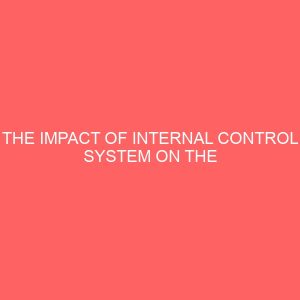Description
INTRODUCTION
There is no doubt that organizations worldwide are striving for success and outcompeting those in the same industry. In order to do so, organizations have to obtain and utilize her human resources effectively. Organizations need to be aware of face more realistically towards keeping their human resources up-todate. In so doing, managers need to pay special attention to all the core functions of human resource manangement as this plays an important role in different organizational, social and economically related areas among others that are influential to the attainment of the organizational goals and thus organizations successful continuation in the market. This study, therefore, goes on to discuss one of the core functions of human resource which is training, employee performance, and how the earlier affects the latter. This chapter is divided into four sections, which will give the reader a comprehensive overview of the study. The first section presents the subject matter by presenting the background of the study. This is will be followed by the statement of the research problem and the purpose of the study. Finally, the last section presents an overview of the progress of the rest of study. 1.1 Background of the Study Organizations are facing increased competition due to globalization, changes in technology, political and economic environments (Evans, Pucik & Barsoux 2002, 32) and therefore prompting these organizations to train their employees as one of the ways to prepare them to adjust to the increases above and thus enhance their performance. It is important to not ignore the prevailing evidence on growth of knowledge in the business corporate world in the last decade. This growth has not only been brought about by improvements in technology nor a combination of factors of production but increased efforts towards development of organizational human resources. It is ,therefore , in every organizations responsibility to enhance the job performance of the employees and certainly implementation of training 11 and development is one of the major steps that most companies need to achieve this. As is evident that employees are a crucial resource, it is important to optimize the contribution of employees to the company aims and goals as a means of sustaining effective performance. This therefore calls for managers to ensure an adequate supply of staff that is technically and socially competent and capable of career development into specialist departments or management positions (Afshan, Sobia, Kamran & Nasir 2012, 646). The question that may arise in many instances is why human resources are important. Bearing in mind that human resources are the intellectual property of the firm, employees prove to be a good source of gaining competitive advantage (Houger 2006), and training is the only way of developing organizational intellectual property through building employees competencies. In order to succeed. Organizations have to obtain and utilize human resources effectively. Organizations ,therefore, need to design its human resource mananagement in ways that fit into the organization’s structure as this it will make the organizations achieve their goals and objectives. Moreover, it is also important for organizations to assist their workforce in obtaining the necessary skills needed and, increase commitment. The management of human resources in Africa in general and Uganda in particular is rather challenging as most organizations have difficulties finding proper human resources. This may partly be a result of the different kinds of problems, for example, political instability, corruption, bureaucracy, poor infrastructure, low levels of education and purchasing power, diseases and famine known to prevail in the African business context (Kamoche 2002, 994 – 995). 1.2 Problem Statement Despite the increasing effects on training of organizational employees by organizations, there is still limited literature on human resource development issues in developing countries (Debrah & Ofori 2006, 440) and increasing concerns from organizational customers towards low quality services in the telecommunications sector. It is further worth noting that while much is known about the economics of training in the developed world, studies of issues 12 associated with training in less-developed countries are rarely found. The existing studies in this relation (Harvey 2002; Harvey, Matt & Milord 2002; Jackson 2002; Kamoche 2002; Kamoche, Debrah, Hortwiz & Muuka 2004; Kraak 2005) have taken a general human resource management (HRM) focus creating a gap on issues such as the effect of training on employee performance. This study will contribute in minimizing this gap in the literature and thereby establish the basis to understanding of some aspects of human resource management in general and training in particular in Uganda. 1.3 Goals of the Study In light of the above background, the aim of the study is to examine the effects of training on employee performance within the telecommunication industry in Uganda. The sub goals included are as follows: What training programs exist in the telecommunications sector? What are the training objectives ? What methods are used and do these methods meet the training objectives? How does training affect employee performance? It is expected that the findings of this study will help highlight the ways in which human resource training can be beneficial not only to the organizations but also to the career development of its employees. All in all, the results pave way of improving human resources needed for the competitive performance of organizations operating in the same line of business as the sample companies in Uganda and Africa in general. 1.4 Definition of key concepts Human resource management is the way organizations manage their staff and help them to develop (McCourt & Eldridge 2003, 2) in order to be able to execute organizations’ missions and goals successfully. Human resource development is the integration of individual, career and organization development roles in order to achieve maximum productivity, 13 quality, opportunity and fulfillment of organizations members as they work to accomplish the goals of the organization (Pace, Smith & Mills 1991, 6). Training is a type of activity which is planned, systematic and it results in enhanced level of skill, knowledge and competency that are necessary to perform work effectively (Gordon 1992). Development is a broad ongoing multi-faceted set of activities (training activities among them) aimed at bringing someone or an organization up to another threshold of performance, often to perform some job or a new role in the future (McNamara 2008). Employee performance is defined as the outcome or contribution of employees to make them attain goals (Herbert, John & Lee 2000) while performance may be used to define what an organization has accomplished with respect to the process, results, relevance and success Uganda National Development Program (1995). Afshan et al. (2012) define performance as the achievement of specific tasks measured against predetermined or identified standards of accuracy, completeness, cost and speed. Employee performance can be manifested in improvement in production, easiness in using the new technology, highly motivated workers. 1.5 Structure of the study This study is structured into six chapters; Chapter One gives a brief introduction to the subject of the study. It starts by presenting the background of the study. It continues by providing the statement of the problem of the study, highlights the goals of the study and a brief definition of the key concepts is presented. At the end of the chapter the structure of the study is be described. Chapter Two and Three discusse the theoretical positioning of the study. The focus is mainly on any issues related to HRM practices for example included herein is literature on human resource needs, training methods, employee 14 performance, effects of training on performance and other factors affecting employee performance. Chapter Four presents the study methodology and discusses the procedures used to obtain the data, the reason for using this method, reliability and validity of the study. In the end the limitations of this study will later be discussed. Chapter five gives a presentation of the study results and their analysis. Chapter six is the final chapter of the study. It discusses managerial implications and provides the conclusion to this study. Towards the end of the chapter, future research will be suggested.







